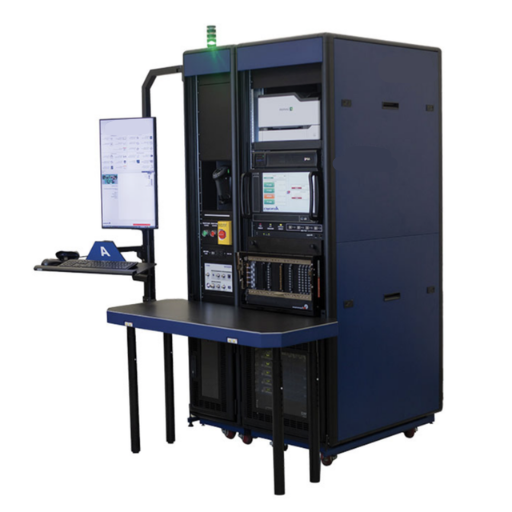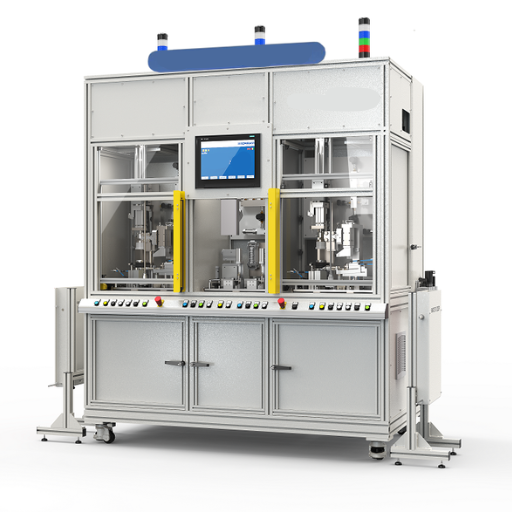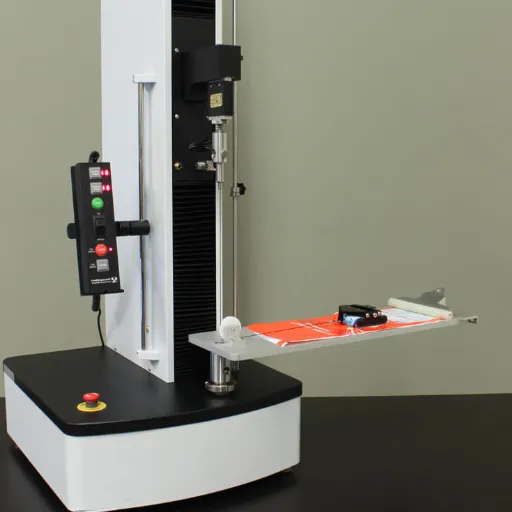Introduction to Functional Testing

Functional testing is a quality assurance process to ensure that a system, component, or device functions as intended. This type of testing evaluates an application’s or machine’s function by their actual performance against predefined requirements. It is concerned with whether all critical features are performed correctly under expected conditions to mitigate risks and detect defects prior to deployment or use.
Definition of Functional Testing
Functional testing is a quality assurance process that validates the functionality of a software application against its prescribed requirements. Utilizing real-time data trends, functional testing ensures each feature behaves as expected in accordance with real-world use cases. It is designed to detect any critical defect early in the development stage so that system downtime may be reduced, and reliability improved.
It generally includes different testing methodologies such as:
- Black box testing
- Smoke testing
- Regression testing
Importance of Functional Testing in Quality Assurance
Functional testing is crucial in QA to verify that changes performed on features within a software application are in line with their requirements and functioning as expected. Key advantages include:
- User Experience Validation: Checks user behavior and interaction with the interface
- Early Defect Detection: Reduces costly defects in production
- Automated Efficiency: Streamlines testing processes for consistency and scalability
- Reliability Assurance: Ensures product meets quality standards
Overview of the Testing Process
Functional testing follows a systematic approach addressing complete software validation:
- Requirements Review: Define test cases based on functional specifications and user stories
- Test Case Design: Verify each feature works as expected with specific requirements
- Execution Phase: Run test cases in controlled environments (manual or automated)
- Defect Management: Log, analyze, and resolve detected issues
- Regression Testing: Ensure fixes don’t introduce new defects
- Reporting: Generate comprehensive results with test coverage and quality metrics
Types of Functional Testing

Functional testing encompasses various types, each serving specific validation purposes:
| Type | Description | Scope | Objective | Example |
|---|---|---|---|---|
| Unit Testing | Validates small code units independently | Smallest units | Verify individual functionality | Function test |
| Integration Testing | Ensures modules interact properly as a group | Modules combined | Test data flow between modules | API testing |
| System Testing | Examines the entire application as a whole | Full system | Validate end-to-end behavior | Login flow |
| Regression Testing | Confirms changes don’t break existing features | Updated areas | Detect unintended bugs | Bug checks |
| Sanity Testing | Verifies basic functionality after a build | Key features | Ensure critical flows work | Menu links |
| Smoke Testing | Validates software stability for deeper tests | Main parts | Detect show-stopping issues | Launch test |
| User Acceptance Testing (UAT) | Assesses if system meets user requirements | Final users | Confirm readiness for deployment | Real-use scenarios |
Additional Testing Types
Performance Testing
Performance testing validates system behavior for speed, scalability, and stability under normal and peak loads. It includes various specialized testing approaches:
- Load Testing: Normal expected workload conditions
- Stress Testing: Beyond normal operational limits
- Endurance Testing: Extended periods of operation
- Scalability Testing: System’s ability to scale up or down
Stress Testing
Usability Testing
Usability testing assesses ease of use, efficiency, and overall user satisfaction. Key measurements include:
- Task success rates
- Error rates
- Time to complete goals
- Navigation efficiency
- User accessibility
Best Practices for Functional Testing

1. Setting Clear Requirements
Establish well-defined functional requirements and acceptance criteria to guide testing behavior and expected system performance.
2. Develop Complete Test Cases
Prepare comprehensive test cases covering all critical functions, including edge cases and negative scenarios.
3. Strategic Use of Automation
Integrate automated tools to reduce redundant efforts and increase test coverage, particularly for regression tests.
4. Real-World Scenario Focus Testing
Create testing scenarios based on genuine user workflows to ensure system supports real-life usage patterns.
5. Severity Priority
Classify defects by severity, assigning high priority to issues that significantly impact system performance.
6. Cross-Platform Testing
Test across various devices, operating systems, and browsers to guarantee consistent performance.
7. Maintain Test Documentation
Document test cases, results, and defect reports for progress tracking and future test cycles.
8. Iterate and Retest
Continuously validate fixed defects and ensure no new issues appear after updates.
Creating Detailed Test Plans
Effective test planning requires a structured approach ensuring thorough coverage:
- Define Scope: Testing objectives, key functionalities, and restrictions
- Specify Test Cases: Input conditions, expected outputs, and execution steps
- Trace Requirements: Link test cases to functional requirements
- Document Environment: Test environment details, tools, and resources
- Set Criteria: Entry, exit, and acceptance criteria for timely evaluation
Implementing Test Automation Strategies
Key Automation Best Practices:
- Define Clear Objectives and Scope: Identify automation goals and high-risk, frequently executed test cases
- Select the Right Tools: Choose tools matching application technology and team skills (Selenium, TestComplete)
- Develop Modular Scripts: Create reusable, maintainable test scripts using keyword or data-driven frameworks
- Integrate with CI/CD: Enable automated test execution in continuous deployment workflows
- Maintain Test Data: Create reliable, reusable datasets reflecting real-world scenarios
- Regular Updates: Keep automation scripts current with application changes
- Measure Metrics: Track execution time, defect detection rate, and ROI
Non-Functional Testing vs. Functional Testing

| Parameter | Functional Testing | Non-Functional Testing |
|---|---|---|
| Purpose | Validates behavior | Assesses quality attributes |
| Focus | What the system does | How the system performs |
| Type | Black-box testing | Performance testing |
| Scope | Features and functionality | System characteristics |
| Tools | Selenium, QTP | JMeter, LoadRunner |
| Outcome | Meets requirements | Ensures robustness |
| Execution | User-oriented scenarios | System stress and load |
| Timing | Early in testing phase | Post-functional testing |
| Key Traits | Accuracy, compliance | Speed, stability, scalability |
| End Goal | User needs met | Optimal performance |
Understanding Non-Functional Testing
Non-functional testing maintains software quality by evaluating system behavior under specified conditions. Common types include:
- Performance Testing: System response speed
- Load Testing: Performance under varying demands
- Security Testing: Protection against attacks and unauthorized access
Real-World Applications of Functional Testing

Functional Testing in Manufacturing
In manufacturing, functional testing verifies products meet intended specifications for operational effectiveness. The process involves:
- Testing individual components and sub-assemblies
- Final product validation under specified conditions
- Using automated testing tools and simulation facilities
- Identifying defects at early production stages
- Ensuring compliance with industry regulations
Functional Testing in Software Development
Software development functional testing verifies system functionality against specified requirements through:
- Testing user interfaces, databases, and APIs
- Client-server application validation
- Unit, integration, system, and acceptance testing
- Using tools like Selenium, JUnit, and TestComplete
- Early defect detection for better software quality
Functional Testing in Engineering
Reference Sources
-
Wikipedia: Functional testing (manufacturing) – Provides an overview of functional testing in manufacturing, including its role in quality control.
-
Reliance Hexham: Equipment Testing | Function Testing – Explains functional testing as a process of simulating equipment performance in its final working environment.
-
ScienceDirect: Functional Test – an overview – Offers a detailed explanation of functional tests, including their parameters and standards.
Frequently Asked Questions (FAQs)
What is functional testing and how does it contribute to product functionality?
Functional testing validates software against functional requirements, ensuring each function operates according to specifications. It enables early detection of functionality flaws, ensuring a workable and reliable product.
What are common types of functional testing?
Common types include black box testing, white box testing, component testing, and system testing. Each focuses on different aspects from input/output validation to internal application workings.
How does test automation improve functional testing procedures?
Test automation increases efficiency and reliability by executing test cases rapidly, minimizing human errors, and supporting CI/CD processes for accelerated feedback and improved software quality.
What are the best practices for performing functional testing?
Best practices include clearly defining testing requirements, developing comprehensive test cases, setting up appropriate test environments, and applying automation tools strategically while maintaining manual testing for complex scenarios.
What is the responsibility of a test engineer in functional testing?
Test engineers design testing processes, create and execute test cases, verify functional requirement fulfillment, evaluate results, identify problems, and work with developers to resolve defects.
How do functional testing techniques differ from non-functional testing?
Functional testing verifies system behavior according to specified requirements, while non-functional testing evaluates quality attributes like performance, usability, and security under various operational conditions.






